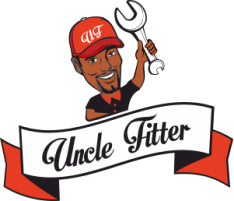Tire rotation
What does Rotate Tires entail
Rotating the tires on a regular basis will significantly extend their lifespan. The car's four tires wear out differently. If one tire wears out more than the others, the car will start pulling in the direction of the newer tires. For example, if you let go of the steering wheel when driving, (for a moment!), the car should continue to go in a straight line. If the tires have worn out differently, the car will not travel in a straight line. It will drift in the direction of the better tire. This is also the reason why when you buy new tires, it is best to buy them in pairs. Rotating your tires will help even out tire wear by allowing each tire to serve in as many of the vehicle's wheel positions as possible. During the rotation, the front tires are moved straight back and the rear tires are moved diagonally to the front. This will ensure that every tire will see each corner of the car. Your mechanic should check for abnormal wear, which may be a sign of other problems:
Keep in mind
- If the tire treading is lower than 1/16th of an inch (or lower than the factory recommendation), the tires are worn out.
- Rotating worn-out tires is of no use since the purpose of tire rotation is to extend the life of tires. If this is the case, the mechanic will not rotate the tires and we will not charge you for the service.
- Tire rotation is not possible on all vehicles.
What are the common symptoms indicating you need a Rotate Tires
- Uneven tire wear, car pulling to one side
- Cupping on the tires
- Tire rotation is performed as part of normal maintenance
How it's done
- Inspect for tire wear and damage
- Check the tread on the tires
- Remove and rotate tires
How can we help?
Tell us what the problem is (e.g the car is not starting or I need new shock absorbers). What kind of car you drive and your contact information.
© 2025 Uncle Fitter All rights reserved.



